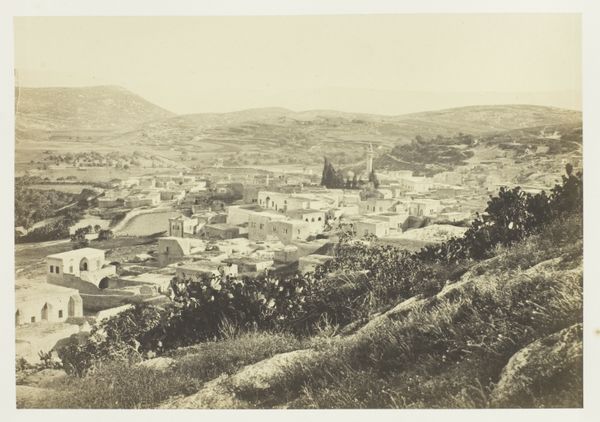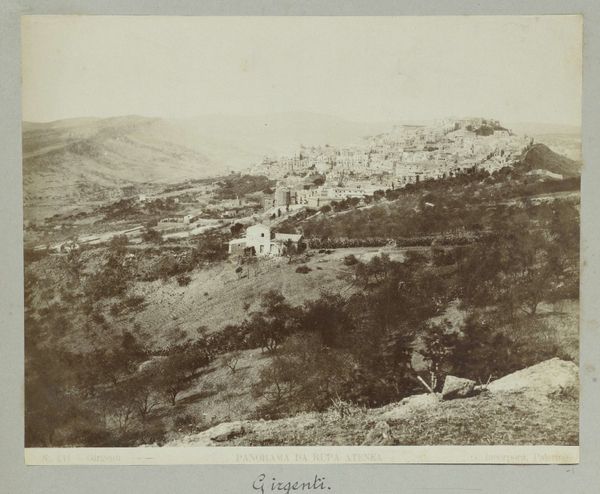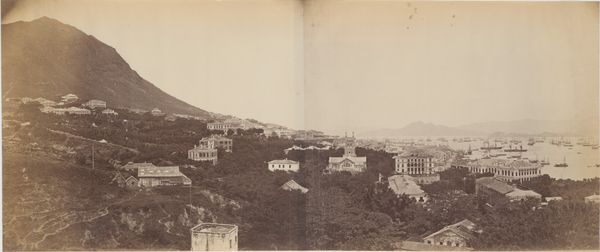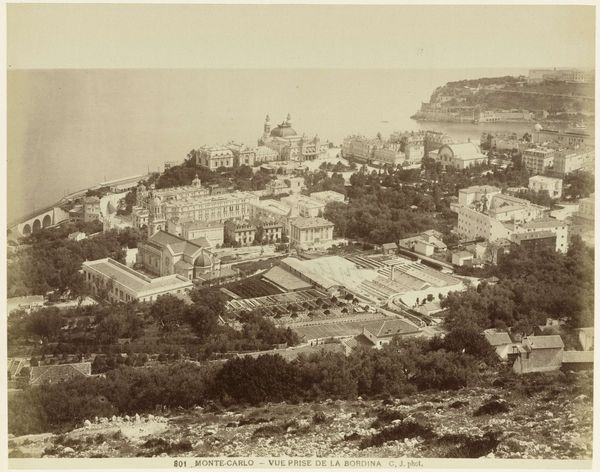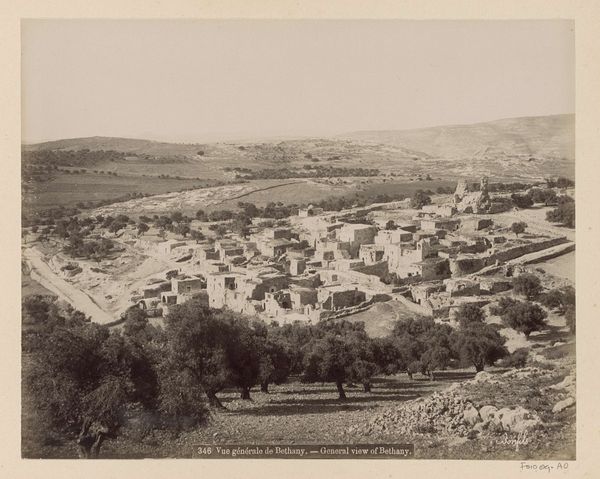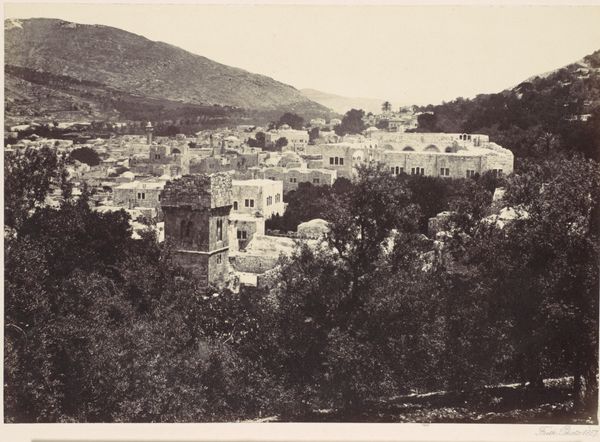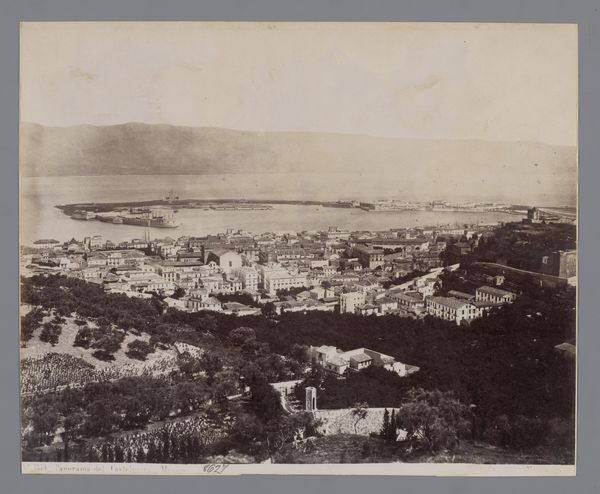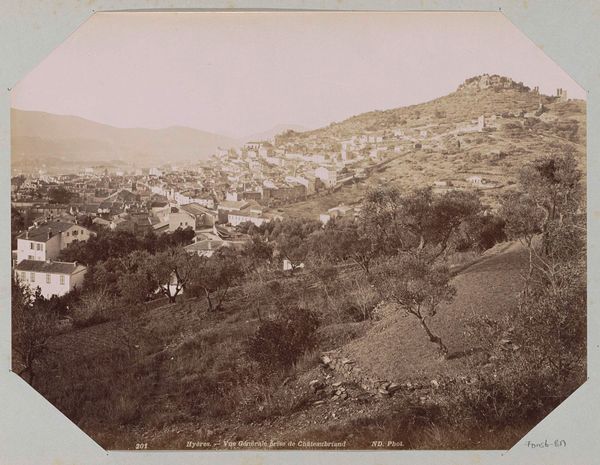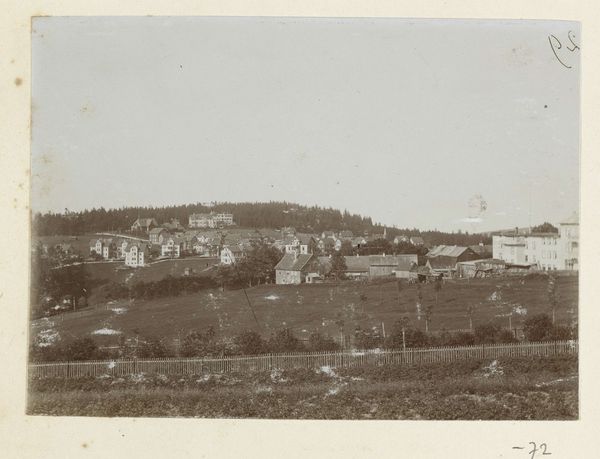
photography, albumen-print
#
landscape
#
photography
#
cityscape
#
albumen-print
Dimensions: height 216 mm, width 277 mm
Copyright: Rijks Museum: Open Domain
Editor: Here we have "Gezicht op Pegli," a landscape photograph dating from around 1870 to 1890 by Celestino Degoix. It's an albumen print, giving it that distinctive sepia tone. I’m immediately drawn to the way the buildings seem to emerge from the landscape, almost like they’re part of the natural world. What stands out to you in this piece? Curator: The relationship between architecture and nature is key, wouldn't you say? Look at the placement of the buildings. They are ordered according to visual cues and symbols of status or influence. The structures at the higher elevation often represent a divine symbolism of spiritual authority. The gradual unfolding as it lowers down and outwards is intriguing, perhaps representing power structures, from the sacred to the civic. The terraces and villas are the steps through which commerce happens to the population along the seaboard. Do you get a similar read of the image, too? Editor: I see what you mean about the structures at the higher elevation. That church really emphasizes that reading. I guess the terraces create this feeling of a hierarchy. But I also see it as the artist mapping this transition from agriculture to city, right? Curator: Precisely. And don't forget the psychological dimension: mountains represent permanence; while water shows possibility and movement, therefore the psychological weight this image holds would vary greatly if presented with no harbor in sight. Editor: So the composition is not just about visual organization, but also about reinforcing cultural ideas about stability and possibility? Curator: Yes. The image becomes a coded representation of a social structure. So by understanding the visual symbols used here, and there presence in that time and age we understand how certain communities understood them and how its perception have transformed, thus its memory have persisted into modernity. Editor: That really changes how I see this photo. Now it feels like so much more than just a pretty cityscape! Curator: Exactly. Once we notice them, these historical traces become very evident in many different cultures across different times.
Comments
No comments
Be the first to comment and join the conversation on the ultimate creative platform.
